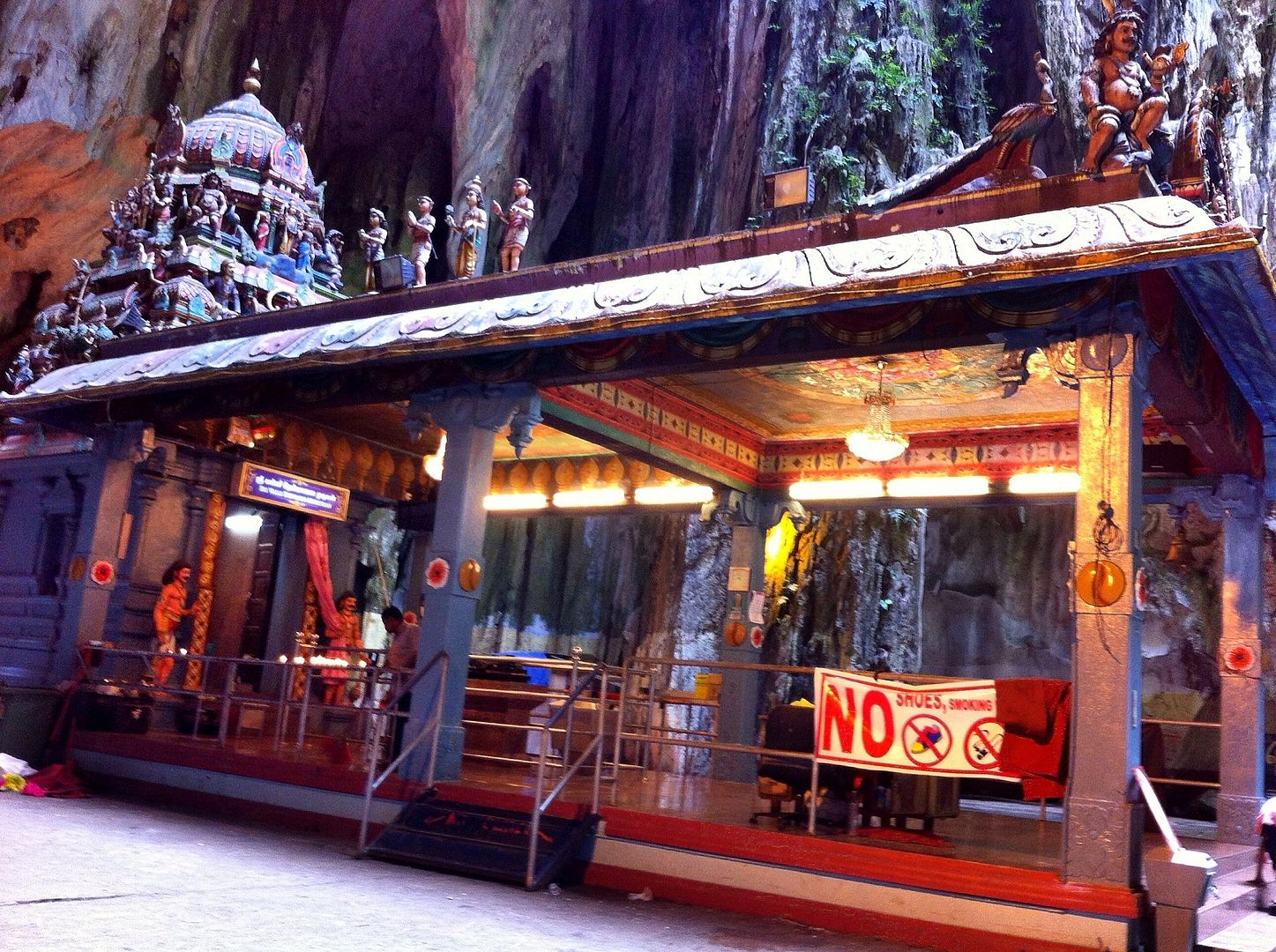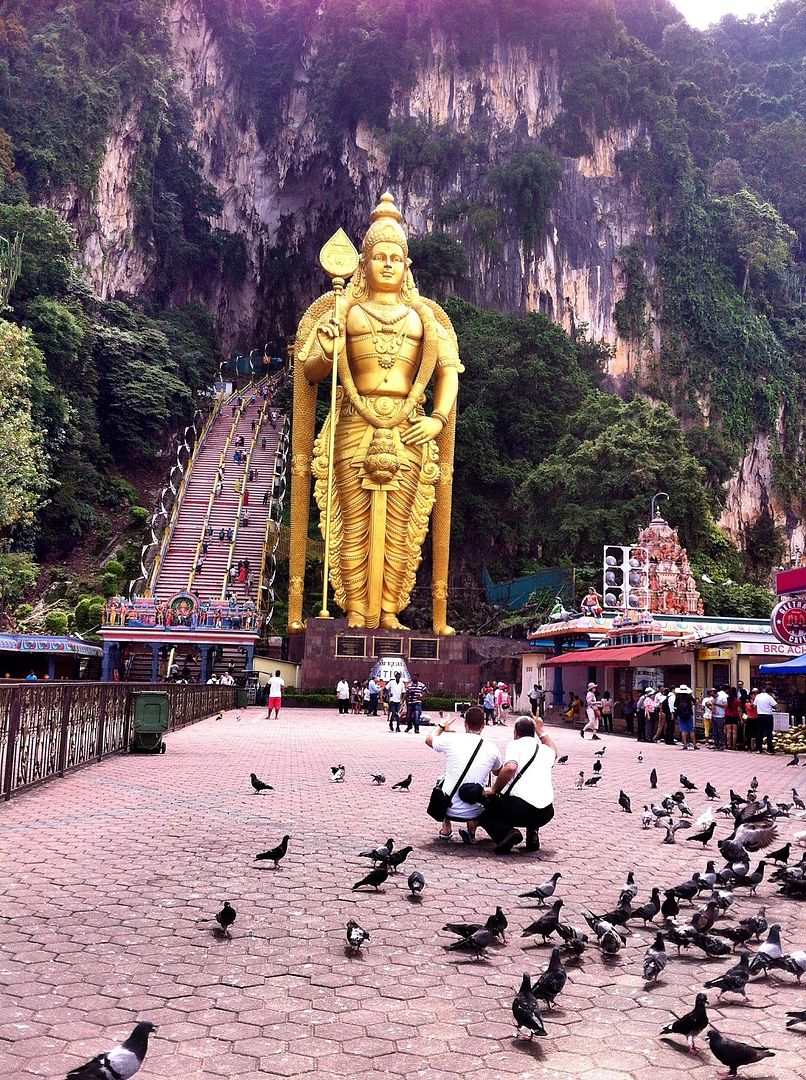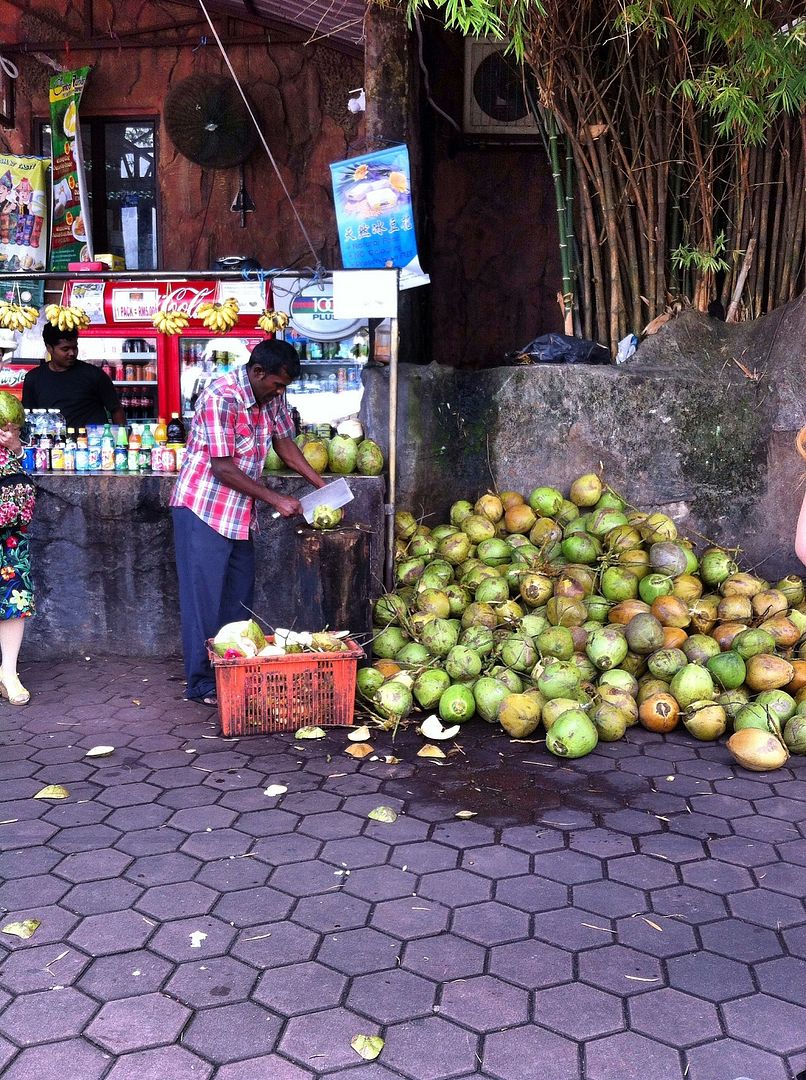I love Malaysia. There, I said it.
There’s just no better way of putting it. 5 days and 4 nights in Malaysia (mostly Kuala Lumpur and a little bit of Georgetown, Penang) with my sister, Pam, showed me that Malaysia is truly Asia and I just loved it. Loved it so much that I didn’t want to leave. Of course, I couldn’t stay but I promised myself that I will go back soon, if not this year then definitely early next year.
Our first day in Malaysia was spent on just familiarizing ourselves with the transport system and the streets (which was easy because Malaysia has a good train and bus system), using maps and guidebooks that our friendly Airbnb hosts provided. It was late for sightseeing so we decided to start hitting the road the next morning. Our first stop: Batu Caves.

Temples, Statues, and Pigeons
Batu Caves is in the northern suburbs of Kuala Lumpur. Since we stayed in Titiwangsa, we had to take the train to PWTC first (which was just one station away from Titiwangsa) and then a KTM Komuter train (runs every 15 – 30 minutes) to Batu Caves. Don’t be afraid of getting off the wrong stop because the last stop is Batu Caves and once you get off the station, it’s hard to miss the big statues and temples in the area. Even before reaching the main cave, you will see several temples and fascinating statues of Hindu gods and goddesses.



There’s also a pond near the caves, with some kois and goldfish swimming around.
Here’s something else that’s abundant on and around Batu Caves – pigeons. There are pigeons near the pond, pigeons in the plaza, pigeons outside the restaurants, and pigeons inside the caves. Pigeons everywhere!
Malaysian Eats
You will never go hungry in Batu Caves (or anywhere in Malaysia, really) because there are lots of food stalls around. One of the reasons I was so excited to visit Malaysia is the food. Malaysian food, like Filipino food, is heavily influenced by different cultures. It combines Malay, Indian, Chinese, Indonesian, Thai, and even British cooking traditions, making for a diverse cuisine. By the end of this trip, I came to love Malaysian food because of its diversity and affordability. It’ so easy to get something delicious and filling for as low as RM5.
Most of the restaurants and eateries around Batu Caves offer vegetarian meals. The store we went to (forgot the name) offers meals worth RM5 to RM9. We ordered vegetarian nasi goreng (fried rice). It was spicy, delicious, and very filling. Look at that serving! That was probably good for 2-3 persons and I ate it all! Of course, I had some climbing to do so I easily forgave myself for indulging.

Lord Murugan, Stairs, Caves, and More Temples
Batu Caves is a limestone hill with a series of caves and temples. It is a shrine dedicated to Lord Murugan. A huge statue of the Hindu god guards the entrance. At 140 feet, this is the biggest and tallest statue of Lord Murugan in the world, the tallest statue of Hindu deity in Malaysia, and the second tallest statue of Hindu deity in the world. It’s probably the shiniest, too. Fun fact: 300 liters of gold paint from Thailand was used for this towering monument.




It is said that Hindu priests have used the famous limestone caves of Batu Caves as temples since 1878. To reach the caves, you have to climb the stairs, which has 272 steps. It looks daunting from afar, but it really wasn’t as hard as I thought it would be. Just a bit tiring, especially when you’re climbing on a hot day.
There is no entrance fee when you visit the main cave (known as Cathedral Cave or Temple Cave) but off the side entrance is the Dark Caves, a separate cave system containing exhibit of endemic animals and insects that live in the cave ecosystem. Guided tours to the Dark Caves cost 30-35 MYR.



When visiting Batu Caves, remember to wear proper attire. If you’re female and you’re wearing shorts or skirts, you will be asked to rent a sarong.
Also important to note: the thieving monkeys! Beware of the macaque monkeys for they can easily snatch your food, your phone, or your camera. They even steal food from the poor chickens and pigeons. And yes, they can bite.
Souvenirs
No trip would be complete without souvenirs, or what we Pinoys call pasalubong. Since Batu Caves is one of the most famous tourist destinations in Malaysia, there is no shortage of souvenir shops in the area. Besides the usual finds like key chains and magnets, there are also saris, sarongs, hats, masks, postcards, pens, paperweights, and miniature versions of the Lord Murugan statue. In the end, we settled for magnets and bottle openers.


A funny thing happened while I was looking at the trinkets inside one of the shops. One of the vendors approached me.
Vendor, in Indian accent: You Cambodia?
Me, also in Indian accent: No. Philippines.
Don’t ask me why I answered in that accent; it just happened. This was the first of three times where we were mistaken to be Cambodian, Thai, or Malaysian, which was perfectly understandable because of how we looked.
So that was our first stop! Visiting Batu Caves was not just fun, it was also enlightening because it opened my eyes to a different culture. It was also a bit tiring but we were up for more. Our next stop: Masjid Negara and Islamic Arts Museum Malaysia (IAMM). Stay tuned!
Have you been to Batu Caves or any Hindu temple? How was the experience? Share your story by leaving a comment below!




















4 Comments